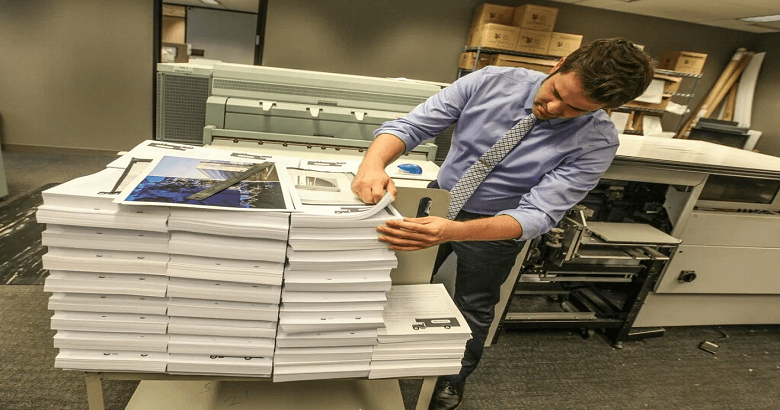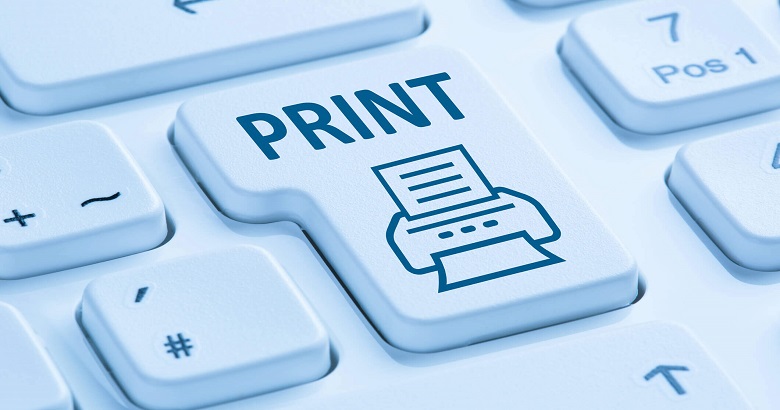Self-publishing is a huge world where dreams come true. One of the biggest problems for people who want to be authors is figuring out cheap book printing methods to print their work. The strong desire to hold a physical copy of their work and see it on bookshelves or in the hands of eager fans is what drives them. On the other hand, the cost of printing can sometimes seem overwhelming. Do not worry because, in this digital age, there are many inexpensive ways to make your book. This complete guide will go into great detail about the different types of printing and how they work. This will help you find the most affordable way to publish your paper.
Tips to Find Cheap Book Printing Solution in 2024
-
Print-on-demand Services
Print-on-demand (POD) services are a new idea changing how books are published today. Platforms like Lulu, Amazon’s Kindle Direct Publishing (KDP), and IngramSpark have made publishing more accessible by letting authors print books only as they are bought. This means authors don’t have to worry about large print runs or high inventory costs. POD is great because it is easy to use and it’s a cheap book printing method. Authors only pay for copies of their books as they are sold, which makes it perfect for people who don’t have a lot of money or aren’t sure if people will want to buy their work.
-
Compare Quotes from Several Printers
Before you decide which printers to use to print your book, it’s a good idea to get quotes from several. Printing companies follow different rules and charge different prices depending on printing technology, paper quality, and binding choices. By studying and getting quotes from several printers, you can determine which cheap book printing options will save you the most money for your needs. Also, ask if there are any discounts for bulk orders. Some printers may offer lower prices for bigger amounts.
-
Opt for Digital Printing
Digital printing is a cheap book printing alternative for modest print runs. Digital printing lets you print whenever you need to and doesn’t cost as much to set up as traditional offset printing, which requires making printing plates and has setup costs. Digital printing might not be the best way to print a lot of copies, but it’s a useful and cheap choice for authors who want to print limited editions or see how the market responds before committing to bigger print runs.
-
Select Standard Paper and Binding Options
When choosing paper and binding for your book, it is important to balance quality and price. Even though premium paper and binding choices might make your book look better, they usually cost more. Suppose you choose standard or economy-grade materials, like lightweight paper and perfect binding. In that case, you can cut down on printing costs without lowering the quality of the print or making it less durable.
-
Use Local Printing Services
Online printing services are easy to use and have cheap book printing options. Still, local printing companies can offer more personalised services and maybe even lower prices, especially for authors who only need to print a few copies. If you build a connection with a local printer, you might get faster turnaround times, lower shipping costs, and the chance to talk to them in person. Also, printers in your area might be more willing to meet special requests or offer solutions tailored to your needs.
-
Consider Printing in Black and White
When it comes to printing, colour and price are often the same. It’s possible that full-colour printing will make your book look better, but it costs more because of the extra ink and production costs. Printing text-heavy books like novels, diaries, and academic papers in black and white can save you a lot of money without making them harder to read. By keeping things simple and focusing on the content of your book, you can get a great finished result without spending a lot of money on printing.
-
Minimize the Trim Size and Page Count
Two important factors that directly affect printing prices are the trim size and the number of pages. More paper and ink are needed for bigger trim sizes and higher page counts, which increases the cost of production. You can keep printing costs low without lowering the quality or content of your book by using a standard trim size and limiting the number of pages. Format your manuscript to fit standard trim sizes in your field, like 5.5″ x 8.5″ or 6″ x 9″, and cut down on the number of pages or chapters you don’t need.
-
DIY Printing and Binding
There are cheap book printing ways to print and bind books that authors are willing to do themselves if they are ready to get their hands dirty. You can print and assemble your books at home if you buy a good printer and binding tools, like a coil or comb binding machine. Even though it takes time and work, do-it-yourself printing gives you full creative freedom and customisation options, which makes it a good choice for small print runs or personalised projects. You can also try different binding styles and materials when you do your binding, giving your end product a unique look.
Conclusion
The process of getting your book printed may seem difficult, but there are many cheap book printing options for people who want to be writers. You should look into different choices and compare prices to find the cheapest way to publish your work, whether you choose print-on-demand services, digital printing, or do it yourself. If you prioritise cost without sacrificing quality, you can reach your writing goals and share your story with the world without spending much money. You can make your dream of publishing a published book come true with careful planning, research, and resourcefulness. This will start a new part of your writing journey.
Frequently Asked Question
-
How much does it typically cost to print a book?
The cost of printing a book can vary widely depending on factors such as printing technology, paper quality, binding options, trim size, and page count. On average, printing costs for a standard paperback book can range from $2 to $5 per copy for print-on-demand services or digital printing. However, the total cost will ultimately depend on the specific requirements of your project and the printing company you choose.
-
Is print-on-demand (POD) more cost-effective than traditional offset printing?
Print-on-demand (POD) is often more cost-effective than traditional offset printing for small print runs due to its on-demand nature and elimination of setup costs. With POD, you only pay for copies of your book as ordered, minimising upfront expenses and reducing the risk of overprinting. However, offset printing may offer lower per-unit costs for larger print runs, making it a more economical choice in certain scenarios.
-
Are there any hidden costs associated with printing my book?
While printing costs may seem straightforward, it’s essential to consider any additional fees or charges that may apply. Some printing companies may impose setup fees, file processing fees, or shipping costs, which can impact the overall cost of your project. Factors such as expedited production or special finishing options may incur extra charges, so be sure to inquire about all potential costs upfront to avoid surprises.
-
Can I save money by formatting my book myself?
Yes, formatting your book can save you money on design and layout fees. Many self-publishing platforms provide templates and guidelines for formatting manuscripts to meet printing specifications, allowing authors to create professional-looking books without hiring a designer. However, it’s essential to ensure that your formatting meets industry standards and is compatible with your chosen printing method to avoid issues during printing.
-
What steps can I take to reduce printing costs without sacrificing quality?
There are several strategies you can employ to minimise printing costs while maintaining the quality of your book. Opting for standard paper and binding options, choosing black and white printing over colour, minimising trim size and page count, and comparing quotes from multiple printers are all effective ways to save money. Additionally, leveraging print-on-demand services, utilising local printing companies, and exploring DIY printing and binding options can reduce expenses without compromising the final product.




